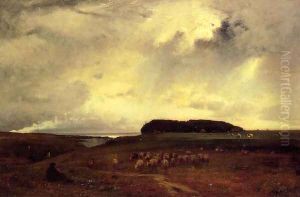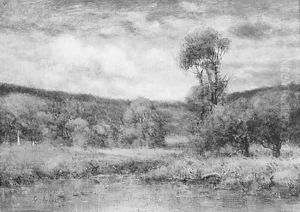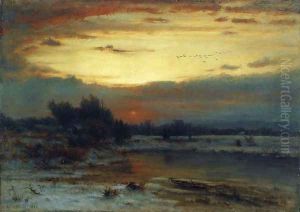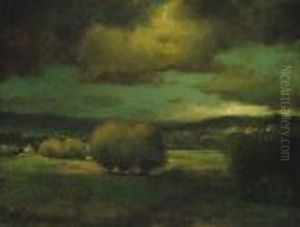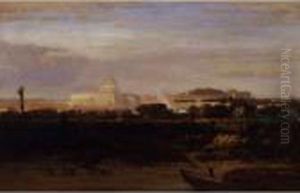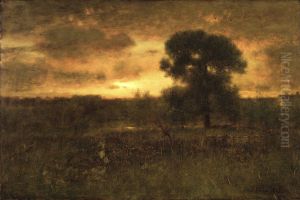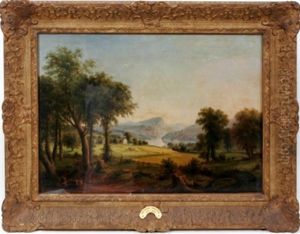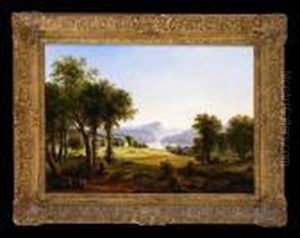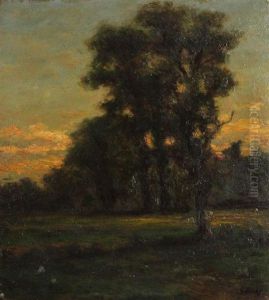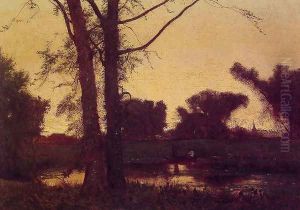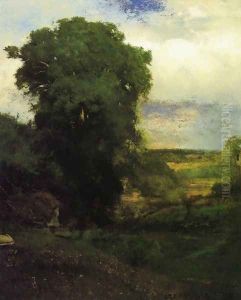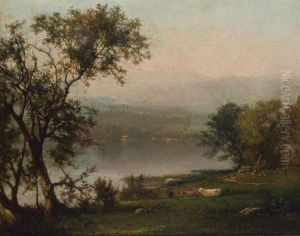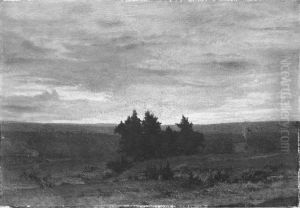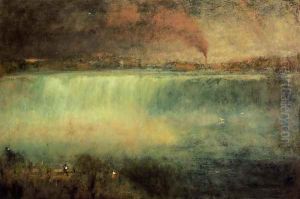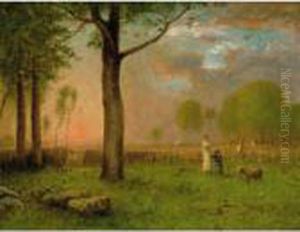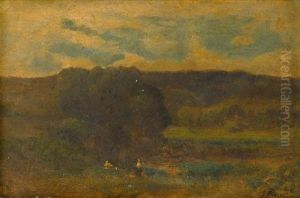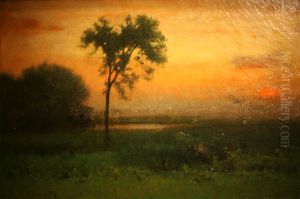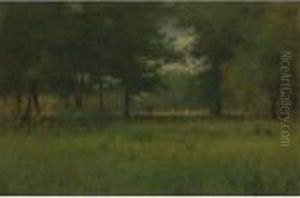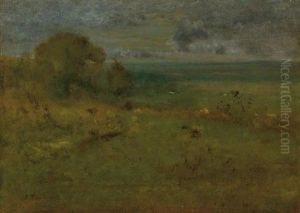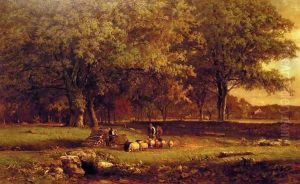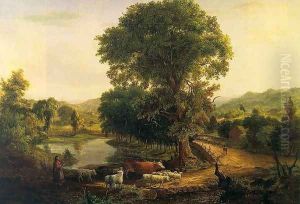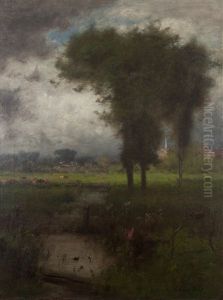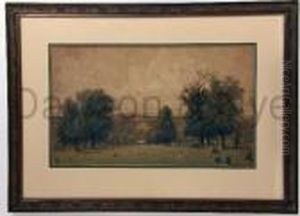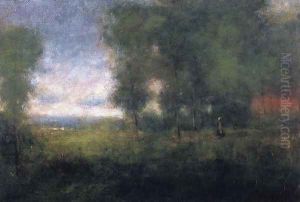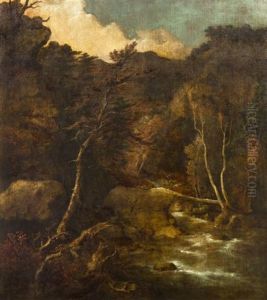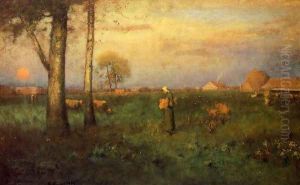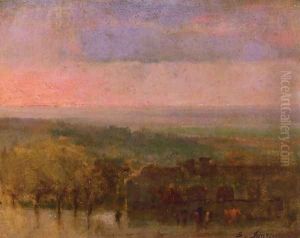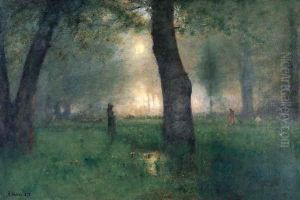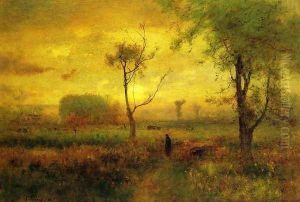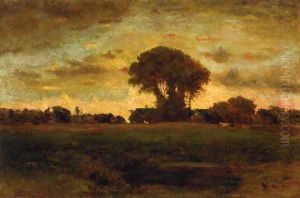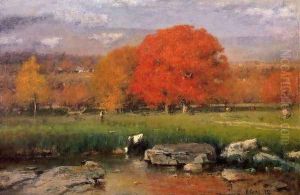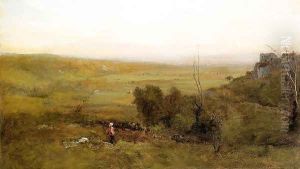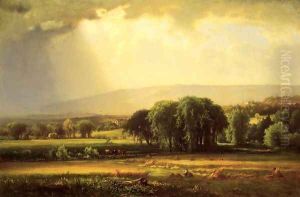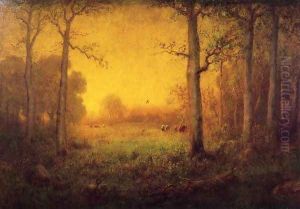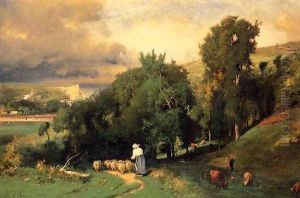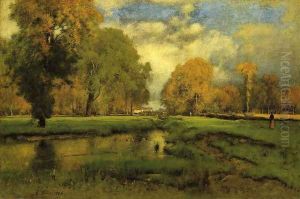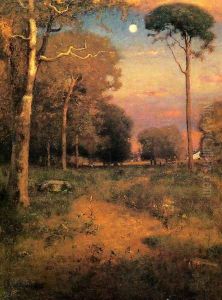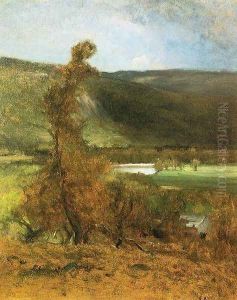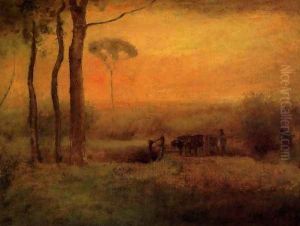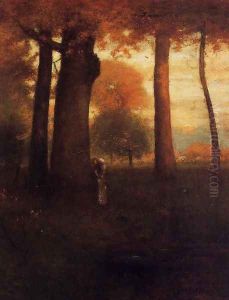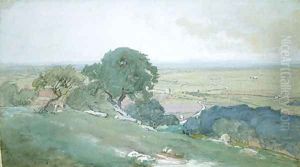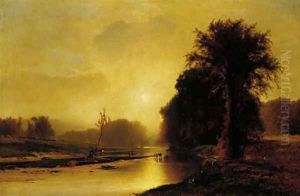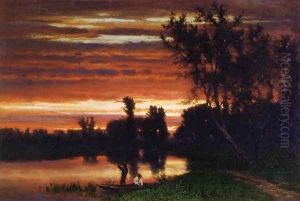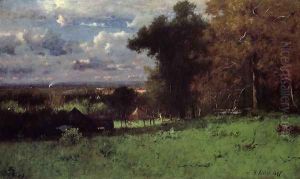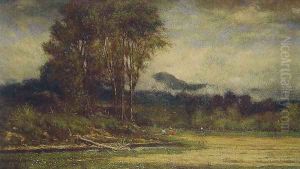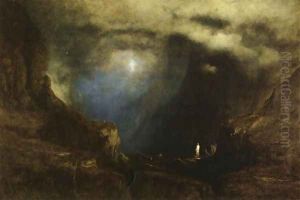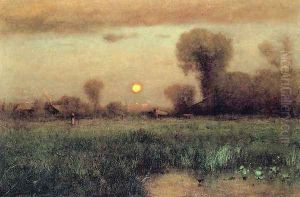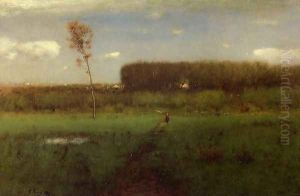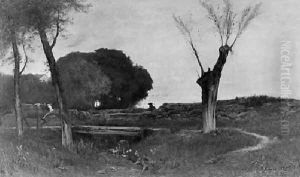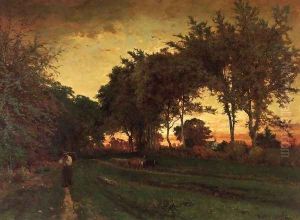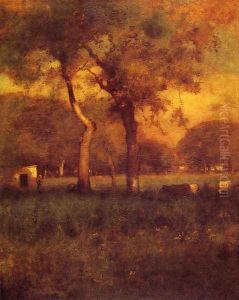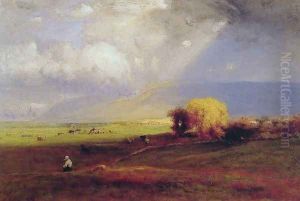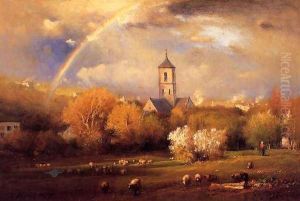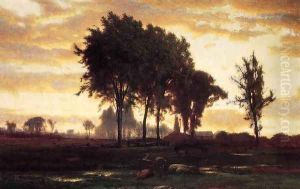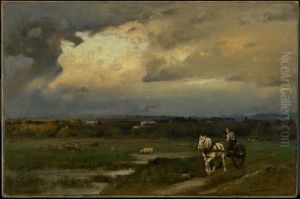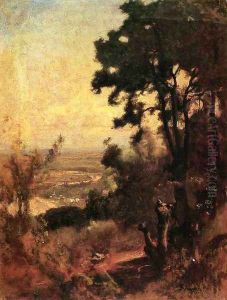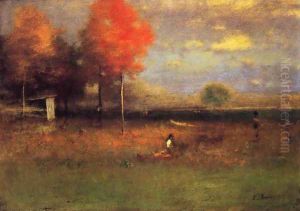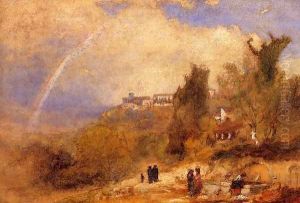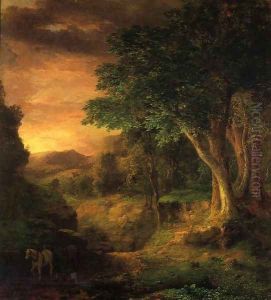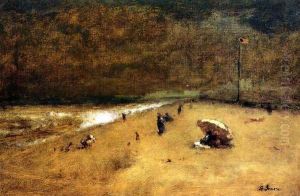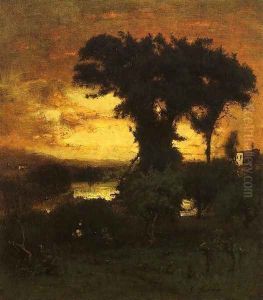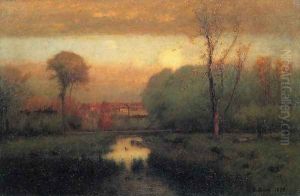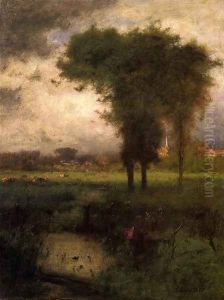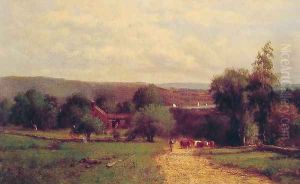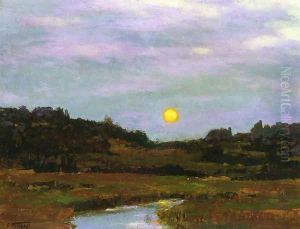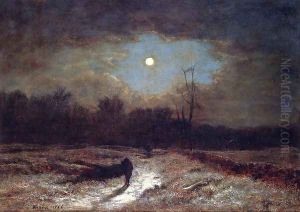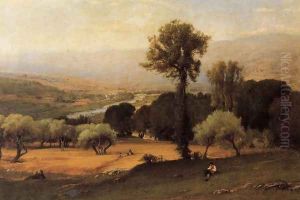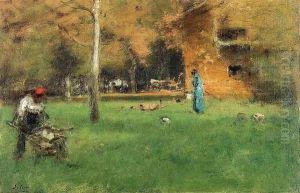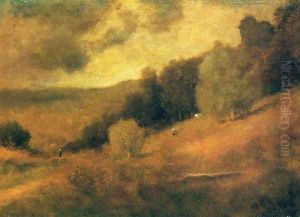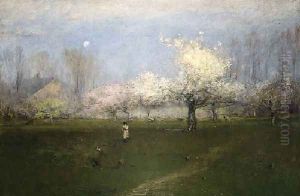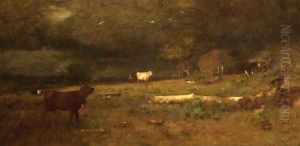George Inness Paintings
George Inness was an influential American landscape painter born on May 1, 1825, in Newburgh, New York. Often regarded as one of the foremost figures of American landscape painting, Inness developed his artistic style through the influence of the Hudson River School and later, by the philosophies of Emanuel Swedenborg, which led to his unique approach to Tonalism.
In his early career, Inness was influenced by the works of Thomas Cole and Asher B. Durand, and he initially painted in the detailed, realistic style of the Hudson River School. However, his style evolved significantly over the years. After spending time in Europe in the 1850s, particularly in Italy, Inness became interested in the work of the Barbizon School, which emphasized more loose brushwork and a focus on the mood and atmosphere of the landscape.
Upon his return to America, Inness worked to develop a personal style that was less about detailed realism and more about conveying a spiritual and emotional impression of nature. He believed that art should reflect a deeper spiritual reality and that the purpose of painting was to capture the 'unseen' and 'felt' aspects of the landscape.
In the 1870s, his work began to show the Tonalist characteristics for which he is best known. Tonalism involved the use of a limited color palette to create a harmonious and often subdued depiction of the landscape. This was a departure from the highly detailed and brightly colored work of his early years. Inness's landscapes from this period often feature soft edges, an emphasis on the horizontal, and an ethereal quality that suggests the transient effects of light and atmosphere.
Inness's work was also influenced by his spiritual beliefs. He was a follower of Swedenborgianism, a Christian theological movement based on the teachings of the Swedish philosopher Emanuel Swedenborg. This influence is seen in the contemplative and sometimes mystical qualities of his landscapes.
George Inness died on August 3, 1894, while visiting Scotland. His work had a profound impact on American art and paved the way for subsequent generations of landscape painters. Inness's approach to painting, which emphasized the spiritual and emotional over the literal representation, continues to be celebrated for its depth and beauty.
